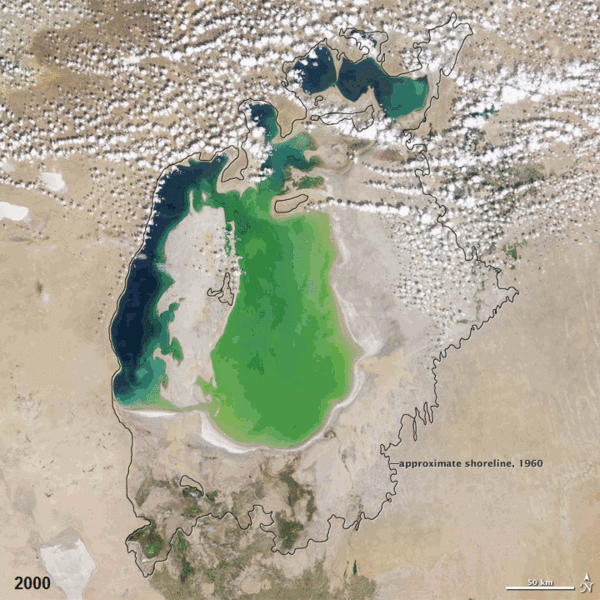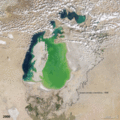Файл:Aral sea.gif

Размер этого предпросмотра: 600 × 600 пкс. Другие разрешения: 240 × 240 пкс | 480 × 480 пкс | 720 × 720 пкс.
Исходный файл (720 × 720 пкс, размер файла: 3,16 Мб, MIME-тип: image/gif, закольцованный, 12 фреймов, 12 с)
История файла
Нажмите на дату/время, чтобы увидеть версию файла от того времени.
| Дата/время | Миниатюра | Размеры | Участник | Примечание | |
|---|---|---|---|---|---|
| текущий | 07:38, 19 декабря 2011 |  | 720 × 720 (3,16 Мб) | ComputerHotline | == Summary == {{Information |Description={{en|In the 1960s, the Soviet Union undertook a major water diversion project on the arid plains of Kazakhstan, Uzbekistan, and Turkmenistan. The region’s two major rivers, fed from snowmelt and precipitation in |
| 12:19, 25 декабря 2010 |  | 720 × 720 (2,92 Мб) | ComputerHotline | == Summary == {{Information |Description={{en|In the 1960s, the Soviet Union undertook a major water diversion project on the arid plains of Kazakhstan, Uzbekistan, and Turkmenistan. The region’s two major rivers, fed from snowmelt and precipitation in |
Использование файла
Следующая страница использует этот файл:
Глобальное использование файла
Данный файл используется в следующих вики:
- Использование в ba.wikipedia.org
- Использование в ca.wikipedia.org
- Использование в en.wikibooks.org
- Использование в es.wikipedia.org
- Использование в et.wikipedia.org
- Использование в eu.wikipedia.org
- Использование в fr.wikipedia.org
- Использование в hsb.wikipedia.org
- Использование в kk.wikipedia.org
- Использование в pl.wikipedia.org
- Использование в ro.wikipedia.org
- Использование в ru.wikipedia.org
- Использование в ru.wikinews.org
- Использование в simple.wikipedia.org
- Использование в sk.wikipedia.org
- Использование в uz.wikipedia.org


